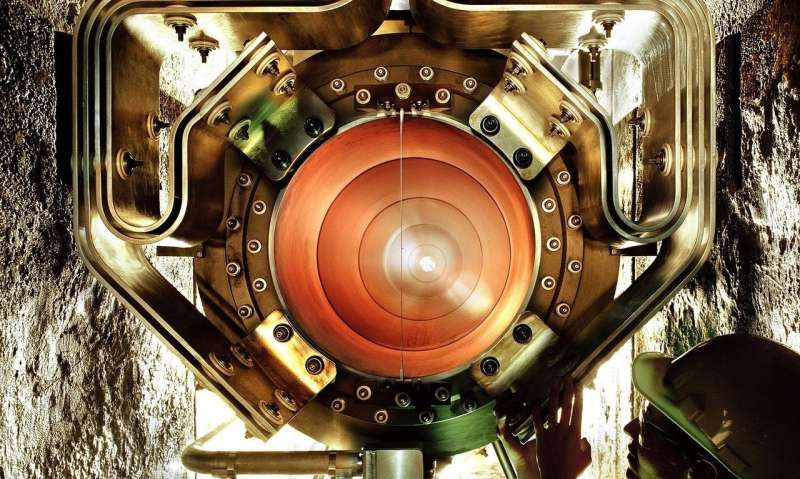March 28, 2022 report
Team at Borexino shows it is possible to have directional and energy sensitivity when studying solar neutrinos

A group of researchers working with data from the Borexino detector at the Laboratori Nazionali del Gran Sasso in Italy, has shown that it is possible to measure solar neutrinos with both directional and energy sensitivity. Two teams within the group have written papers describing the work by the group—one of them has published their work in Physical Review D, the other in Physical Review Letters.
The Borexino detector was first proposed back in 1986 and its structure was completed in 2004. In May of 2007, it began providing researchers with data. Its purpose has been to measure neutrino fluxes in proton-proton chains. The detector, which is currently being dismantled, was made using 280 metric tons of radio-pure liquid scintillator which was shielded by a layer of water. Detections were made as solar neutrinos scattered off electrons in the scintillator—the light that was emitted was picked up by sensors lining the tank.
For most of its existence, data from the Borexino detector was an excellent source of high-resolution sensitivity data down to low energy thresholds, but it offered little in the way of directional trajectories. In this new effort, the researchers found a way to use the data from the detector with data from another detector to provide trajectory information.
The other detector was the Super Kamiokande detector in Japan—it was able to measure the Cherenkov radiation that was given off when electrons were traveling in its giant tank of water, providing their trajectory. The Borexino researchers re-analyzed earlier data at their facility by correlating it with the Cherenkov photons with known positions of the sun; in so doing, they were able to find peaks in the data they represented. They then used those peaks to create computer simulations that allowed them to separate solar-neutrino events from background noise and found they were able to identify real events, which very strongly suggested they had detected Cherenkov photons, which gave them directional information about the neutrinos. They suggest their work should provide new ways for studying the sun's carbon-nitrogen-oxygen-cycle and also improve the results of searches for rare nuclear processes.
More information: M. Agostini et al, Correlated and integrated directionality for sub-MeV solar neutrinos in Borexino, Physical Review D (2022). DOI: 10.1103/PhysRevD.105.052002
M. Agostini et al, First Directional Measurement of Sub-MeV Solar Neutrinos with Borexino, Physical Review Letters (2022). DOI: 10.1103/PhysRevLett.128.091803
Journal information: Physical Review Letters , Physical Review D
© 2022 Science X Network





















